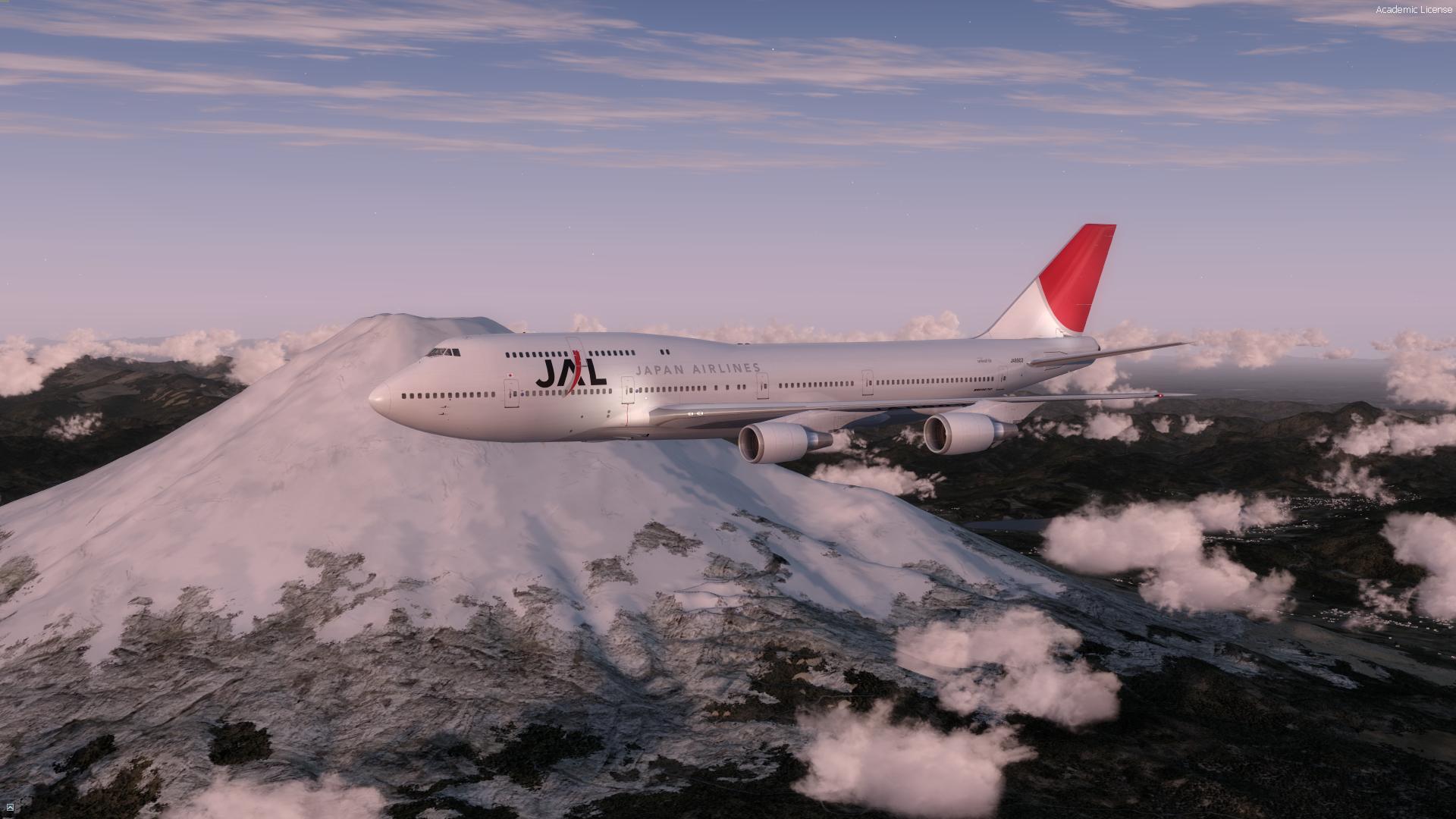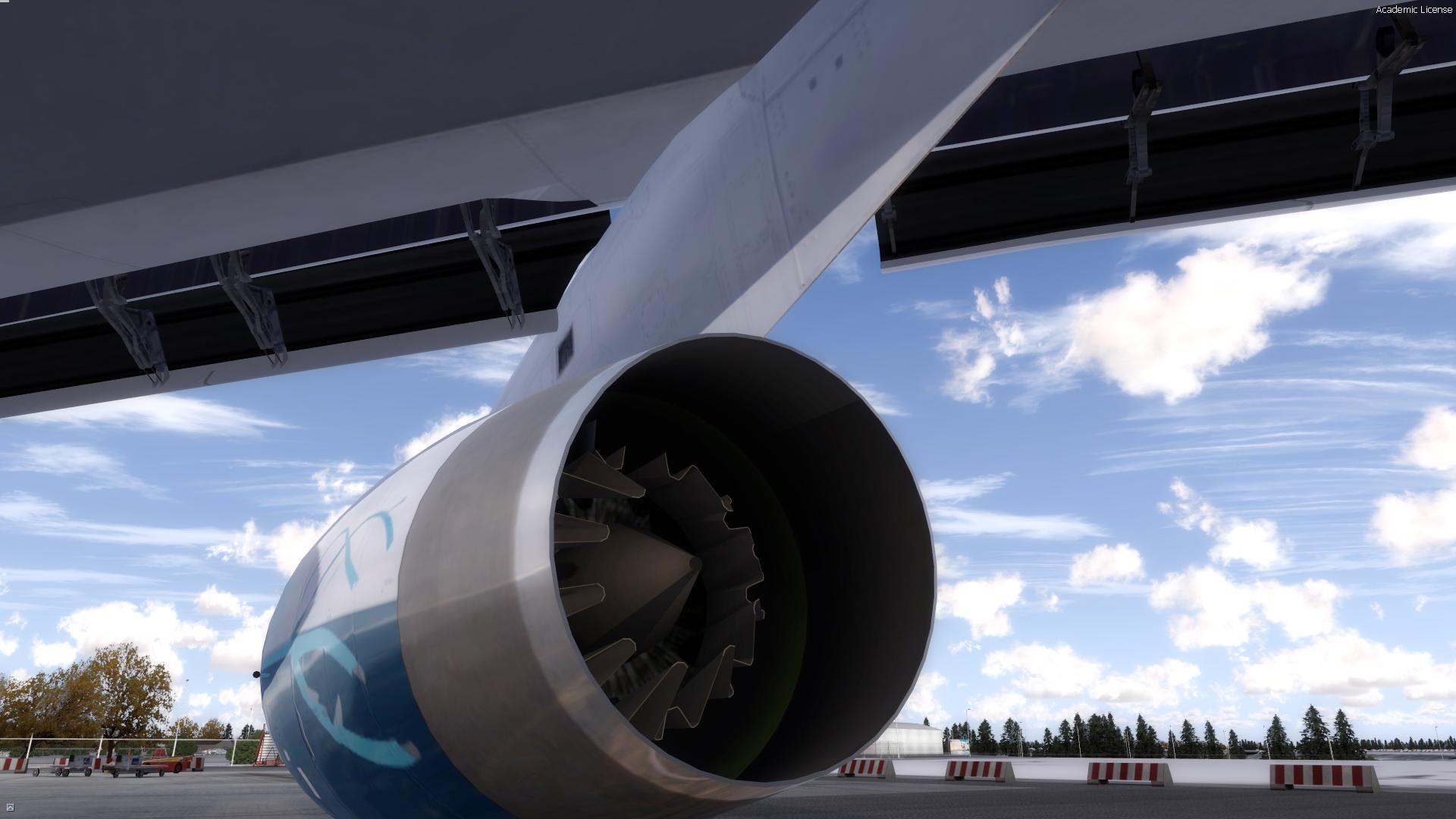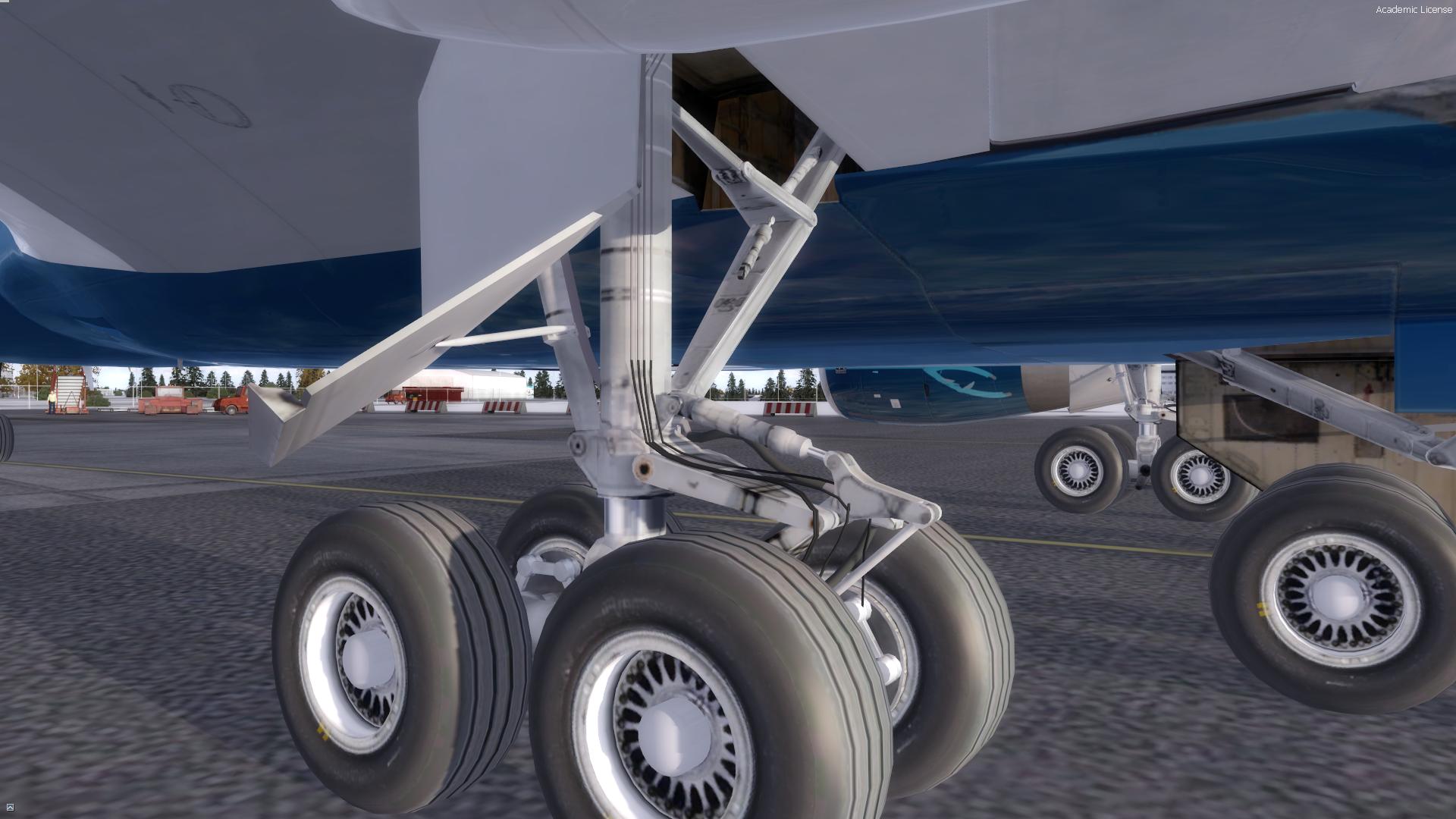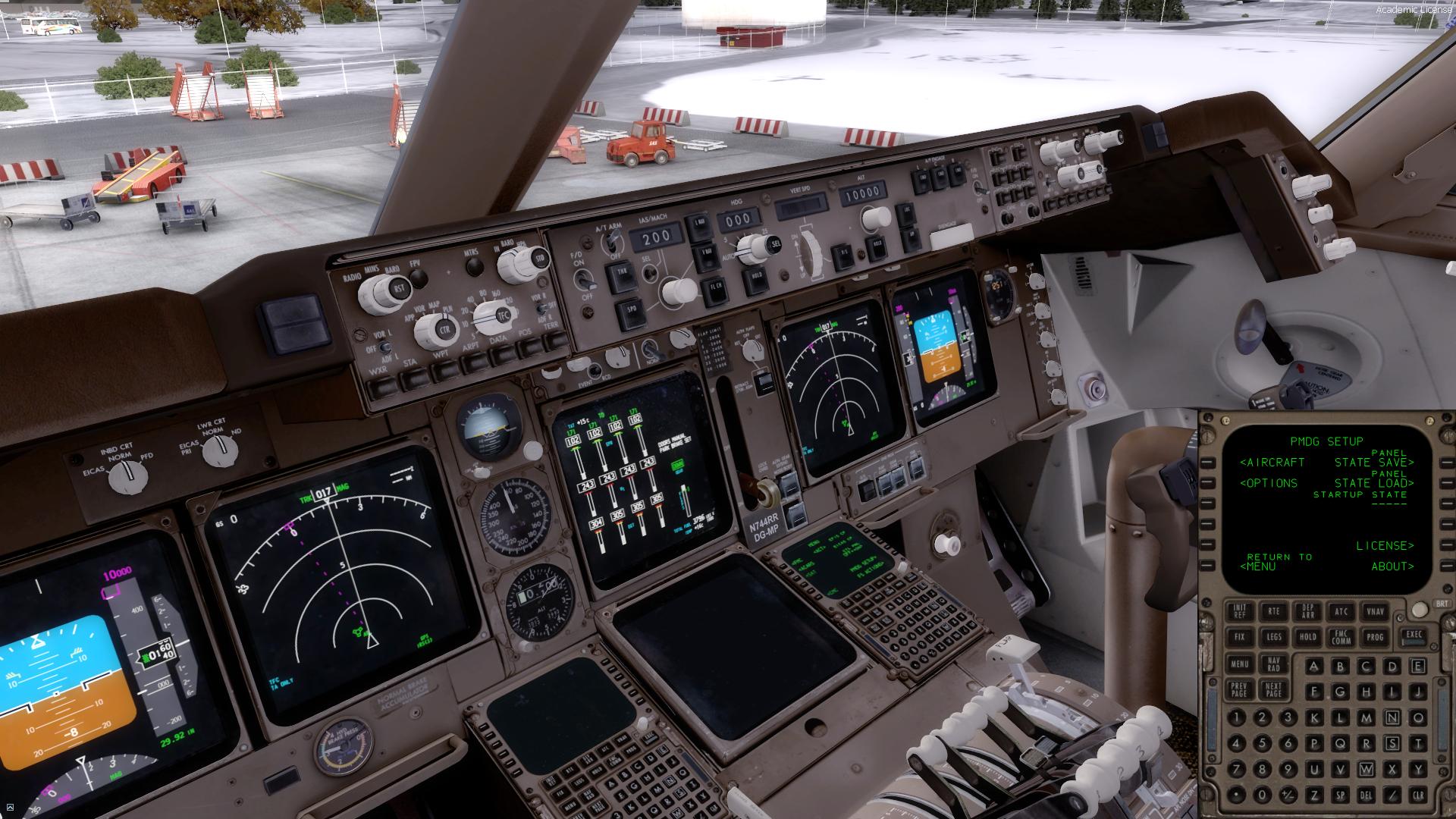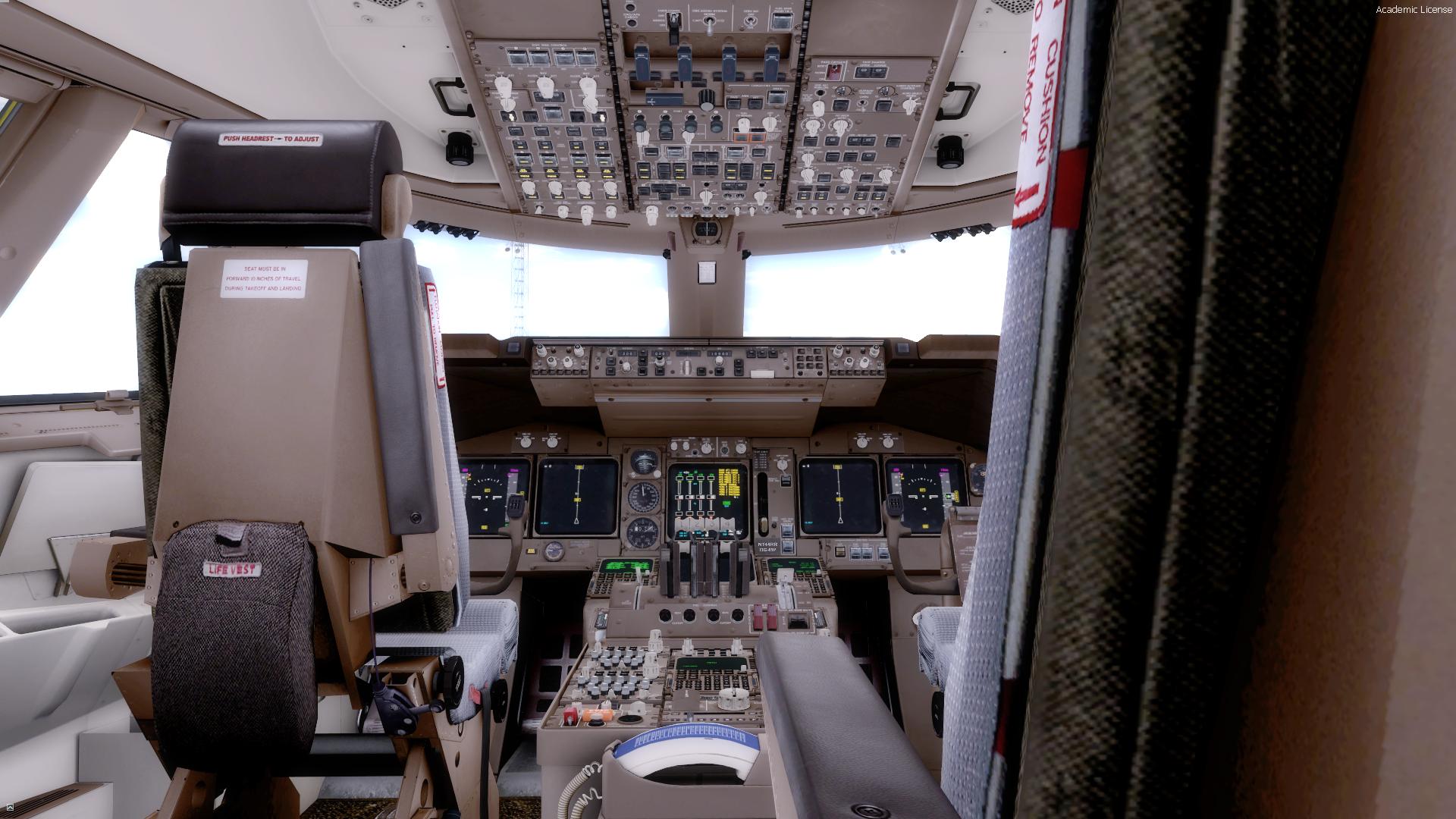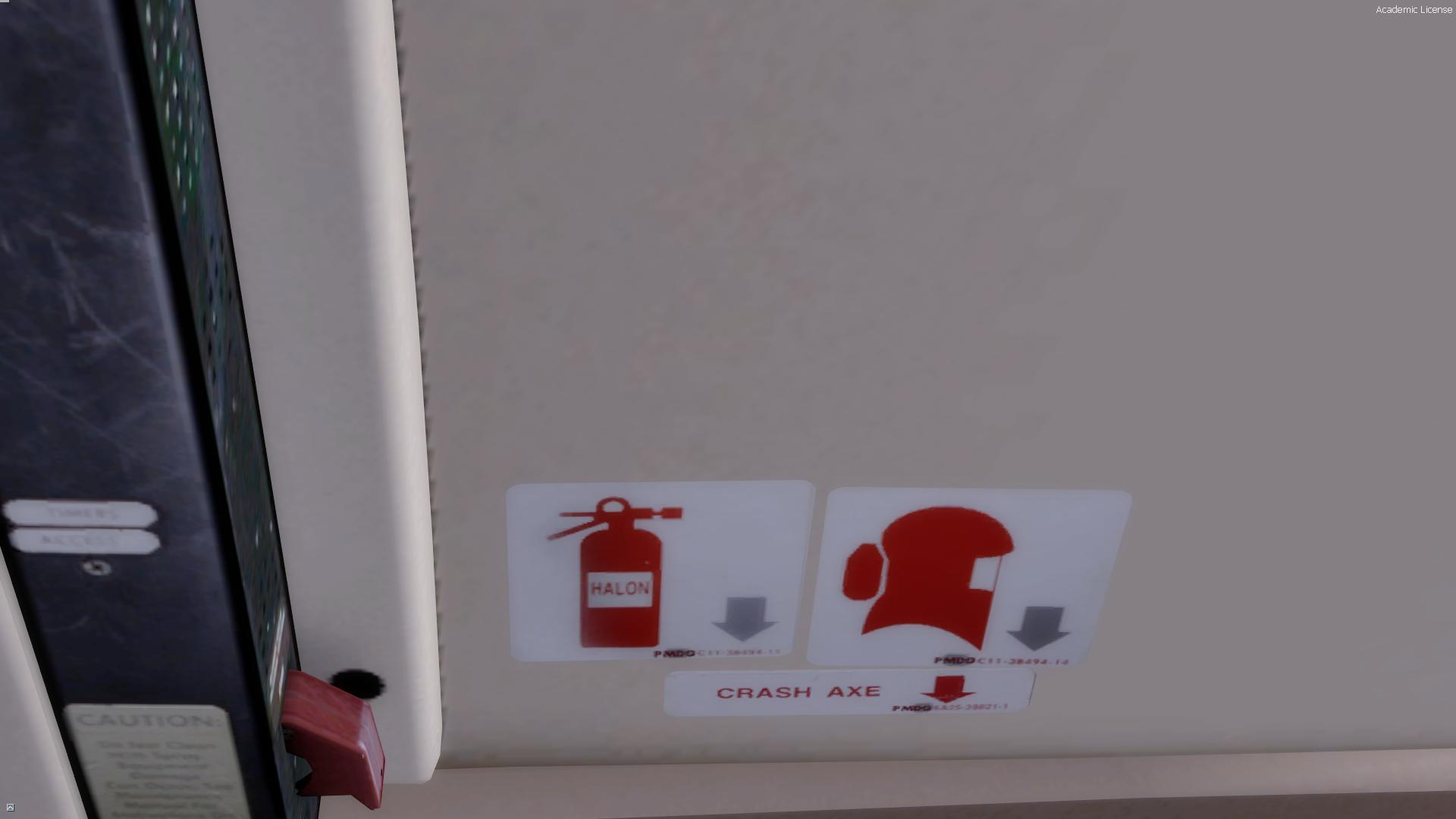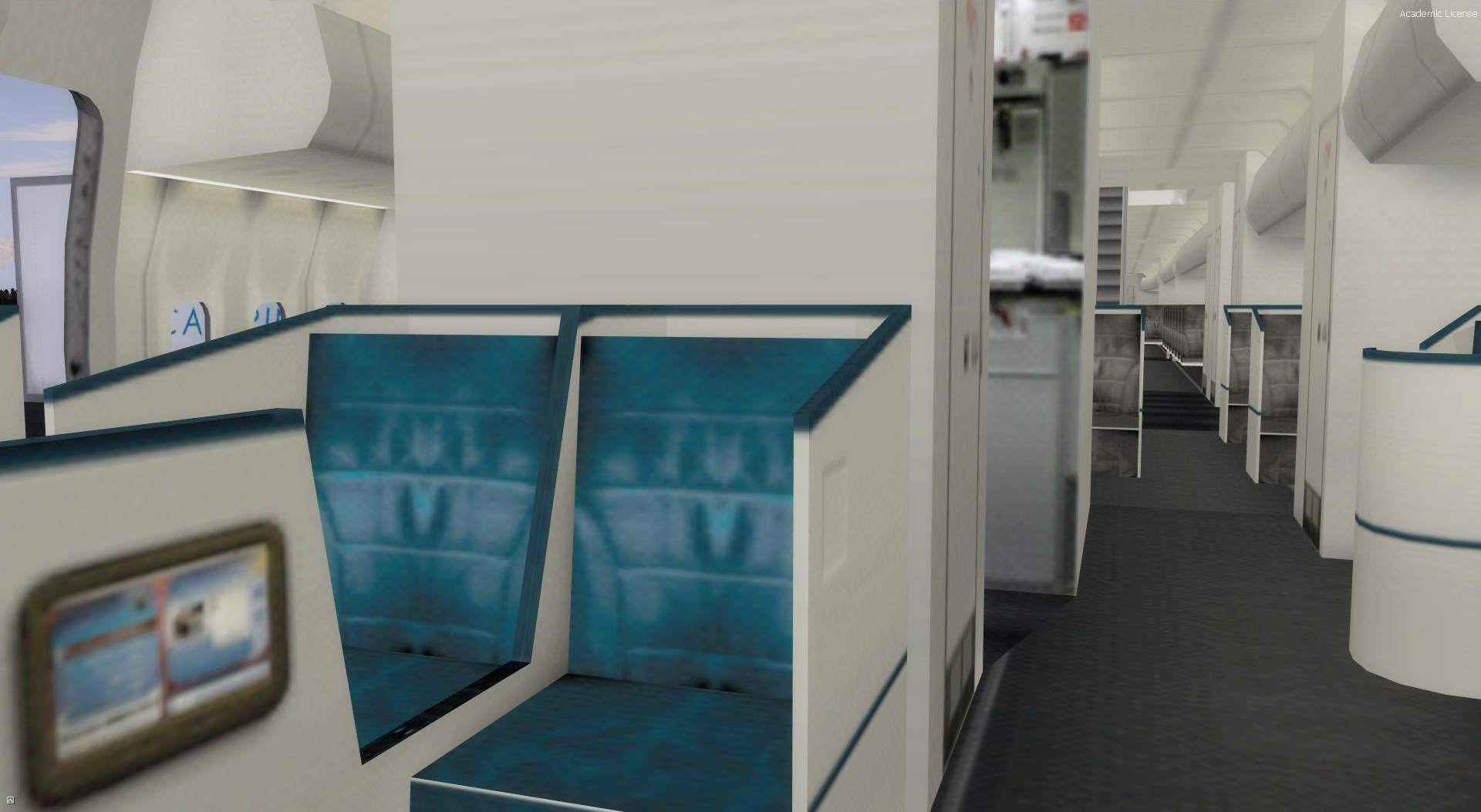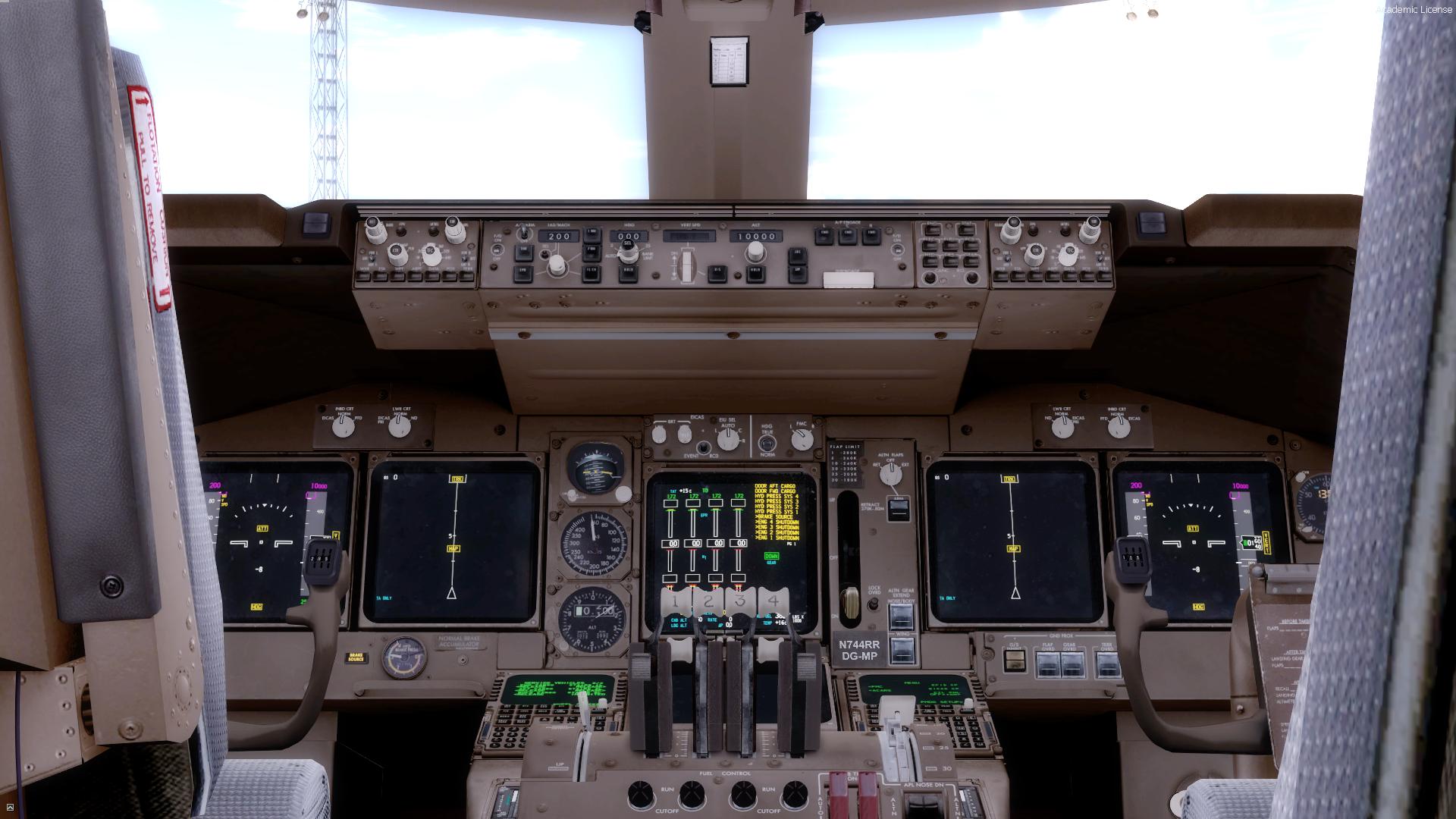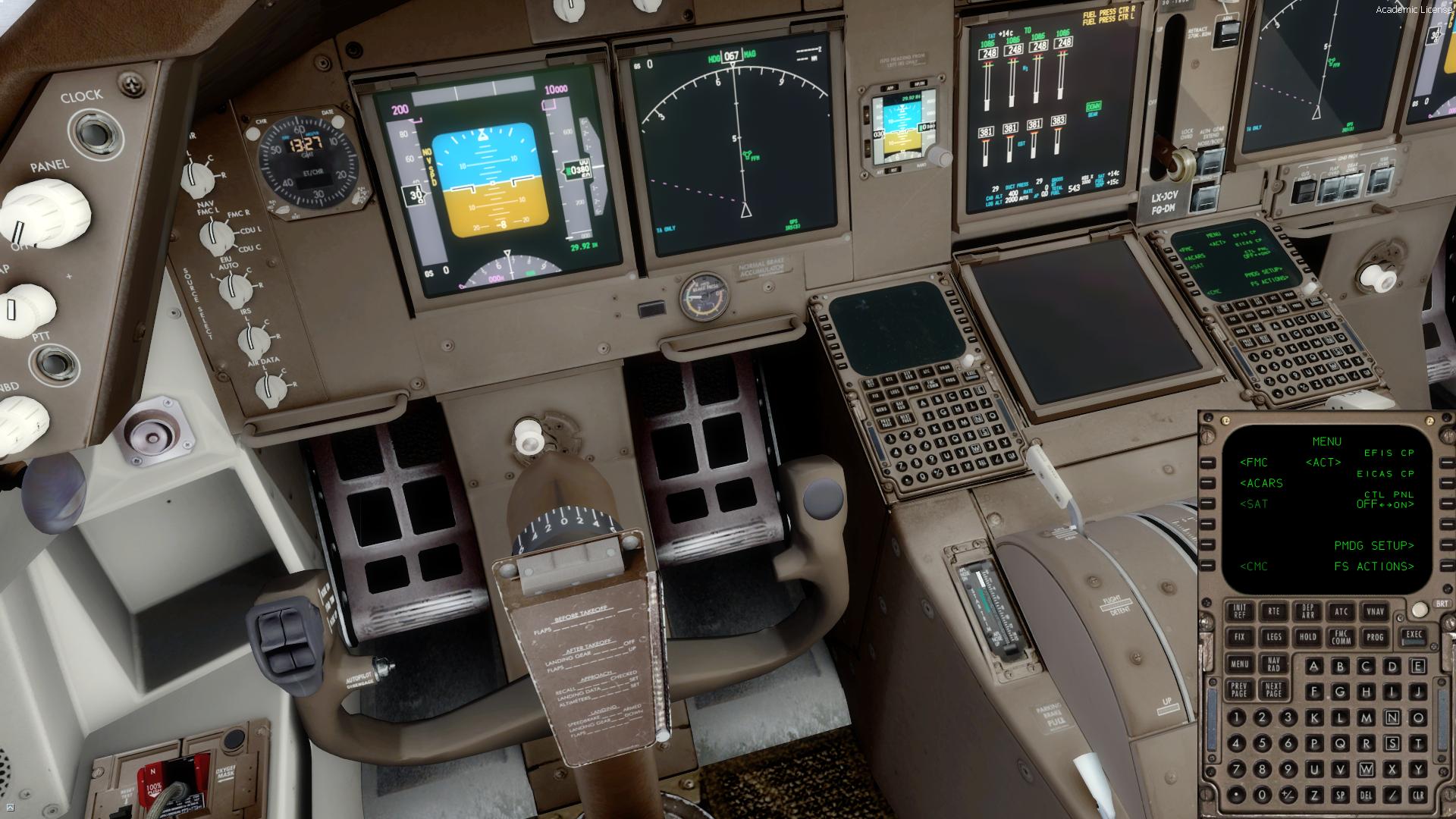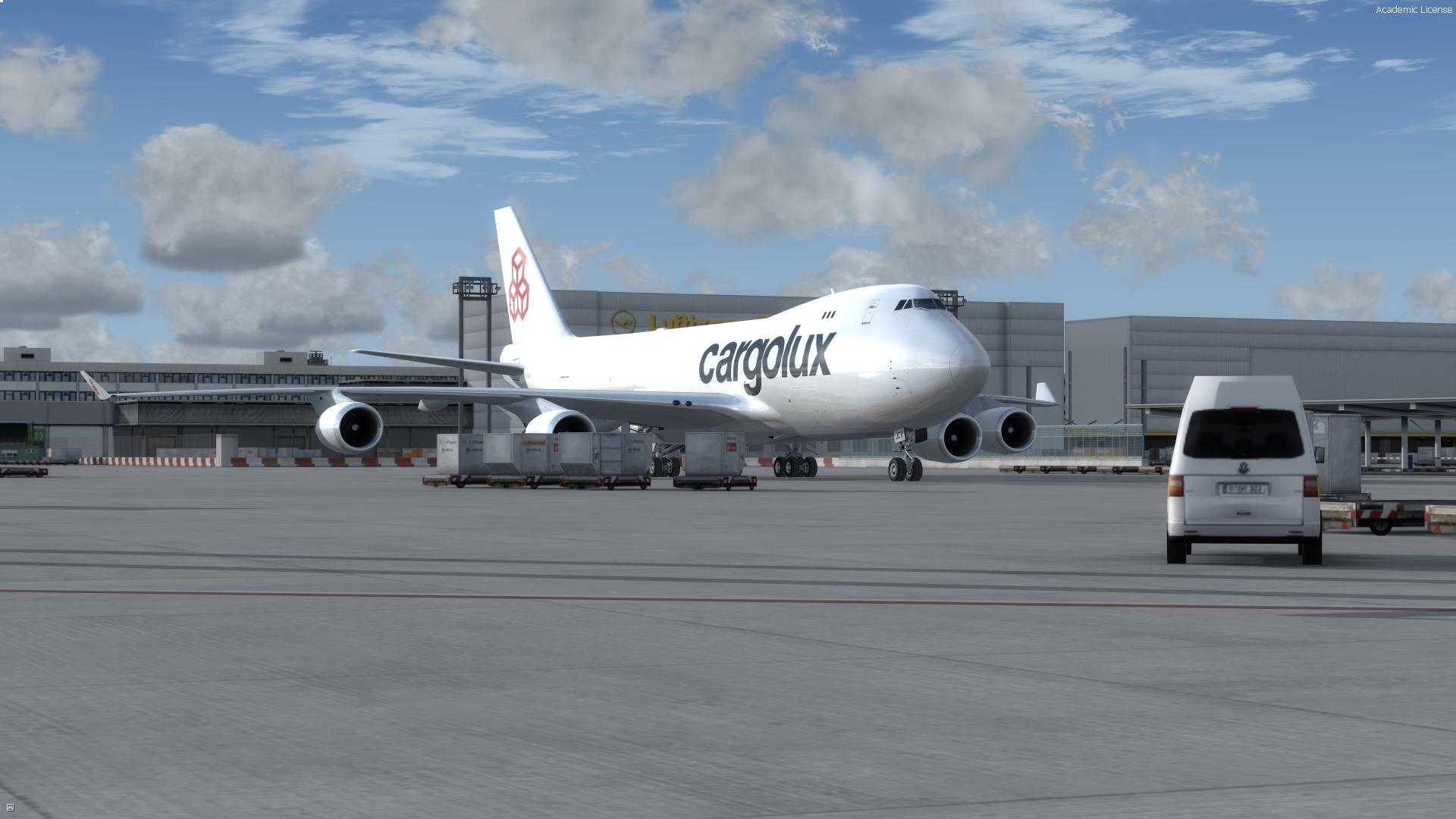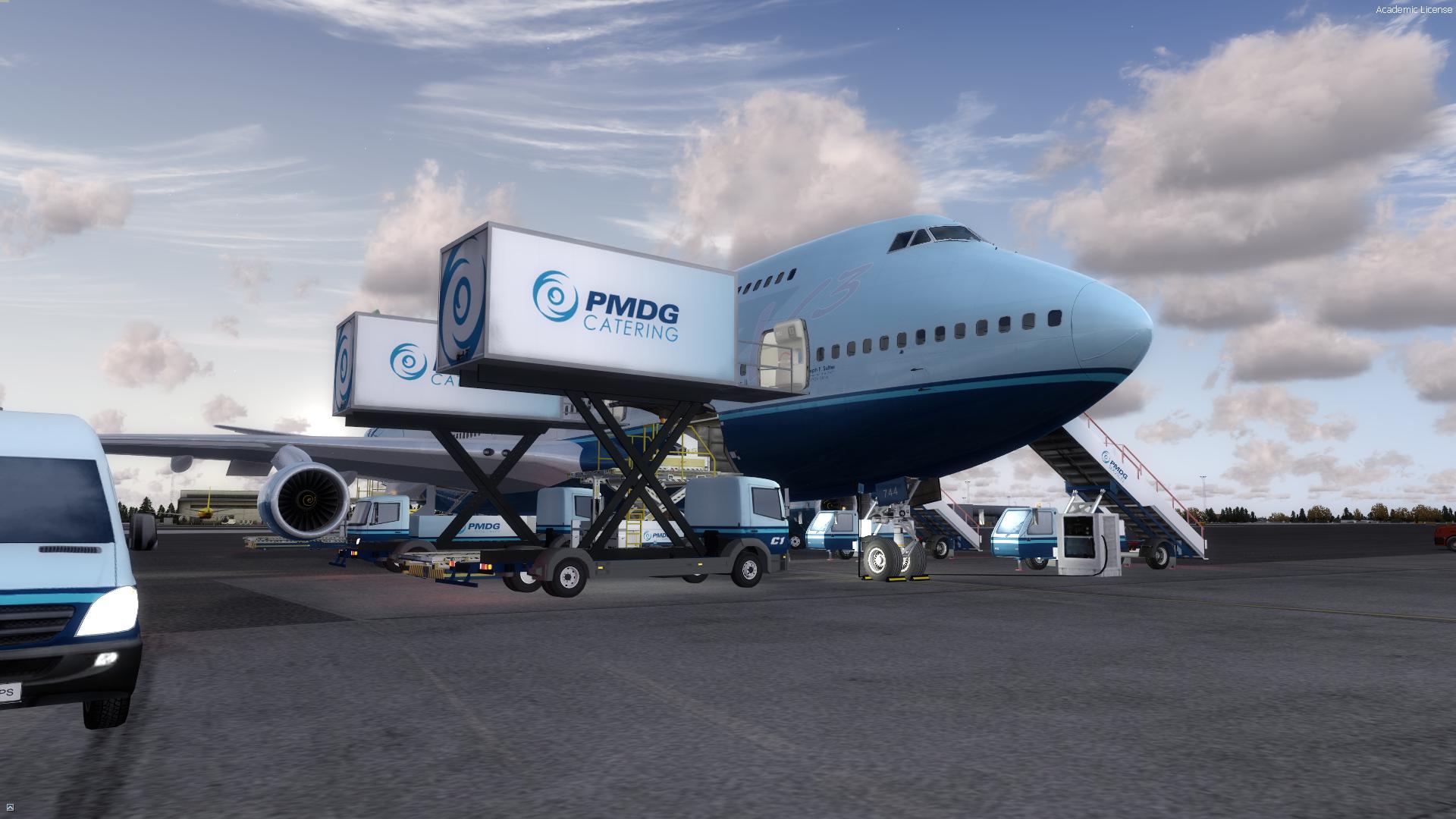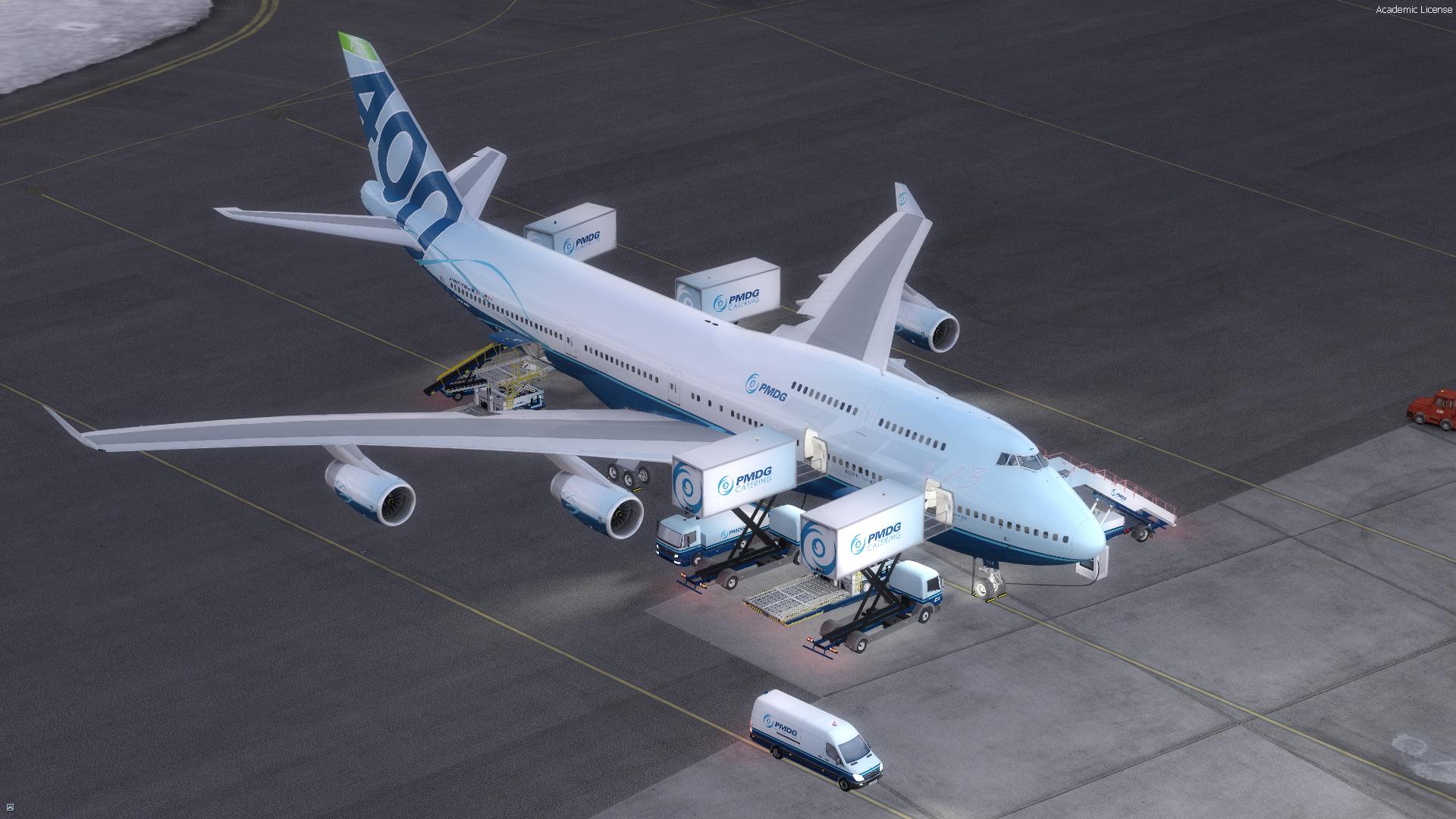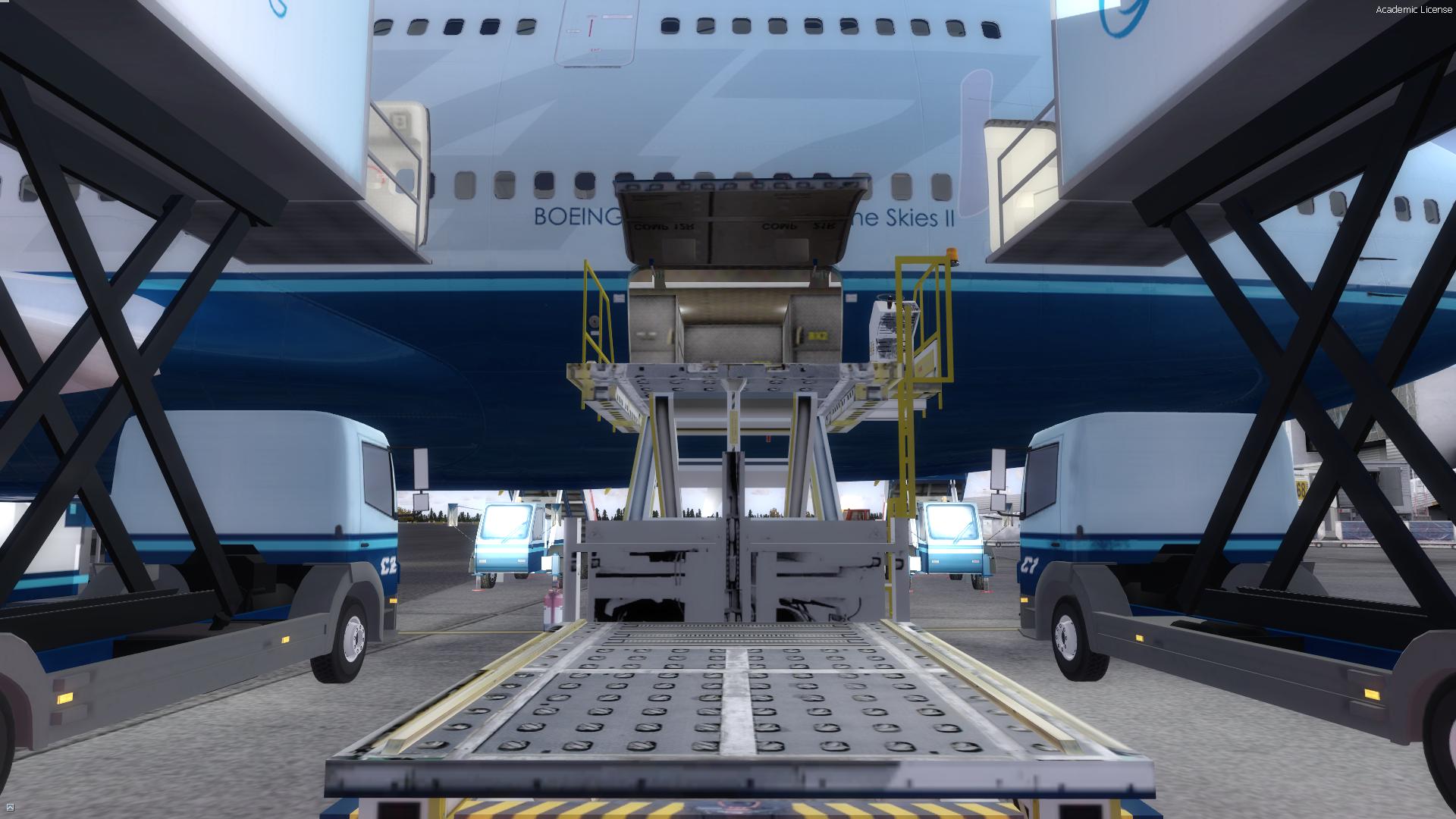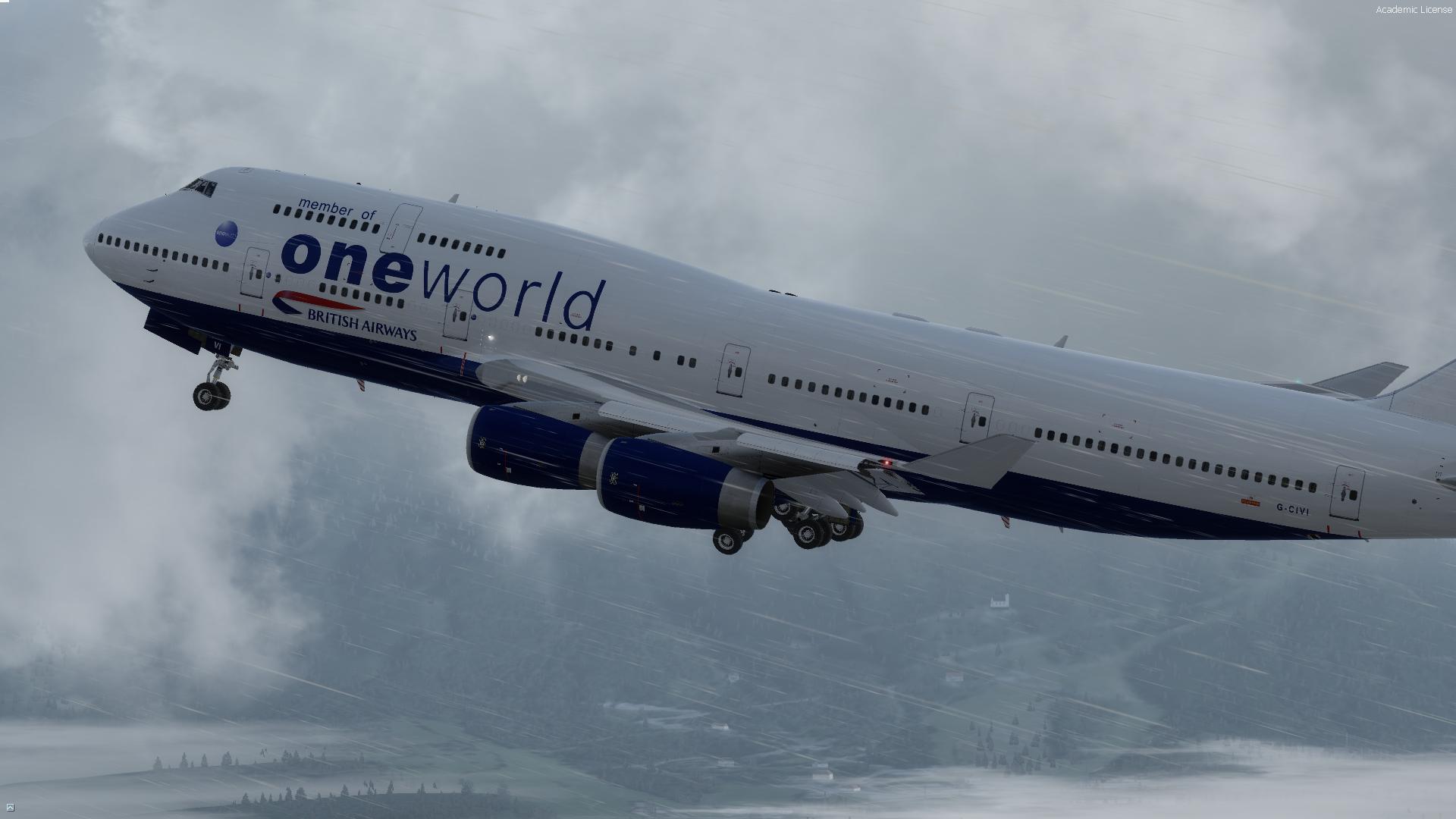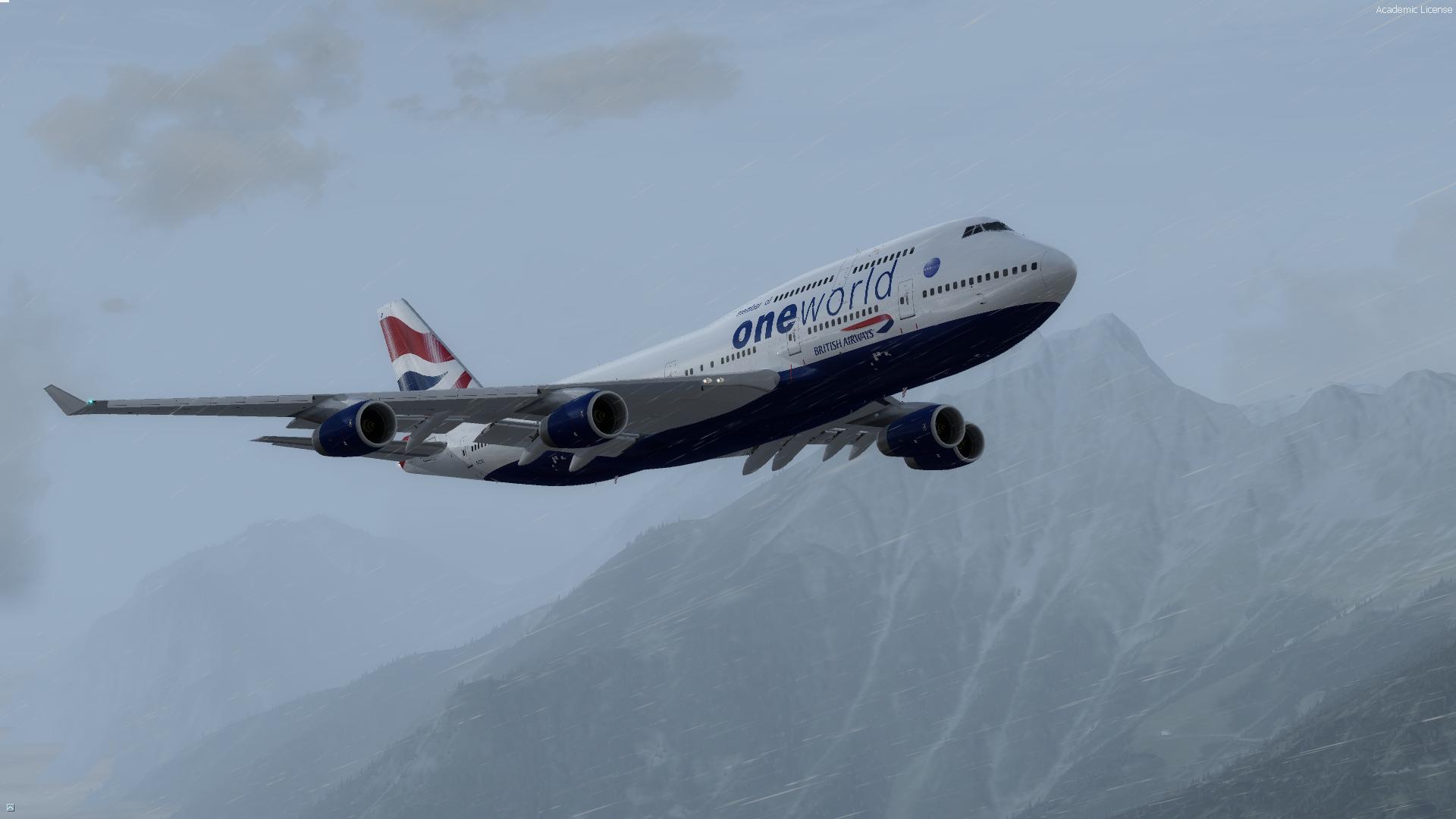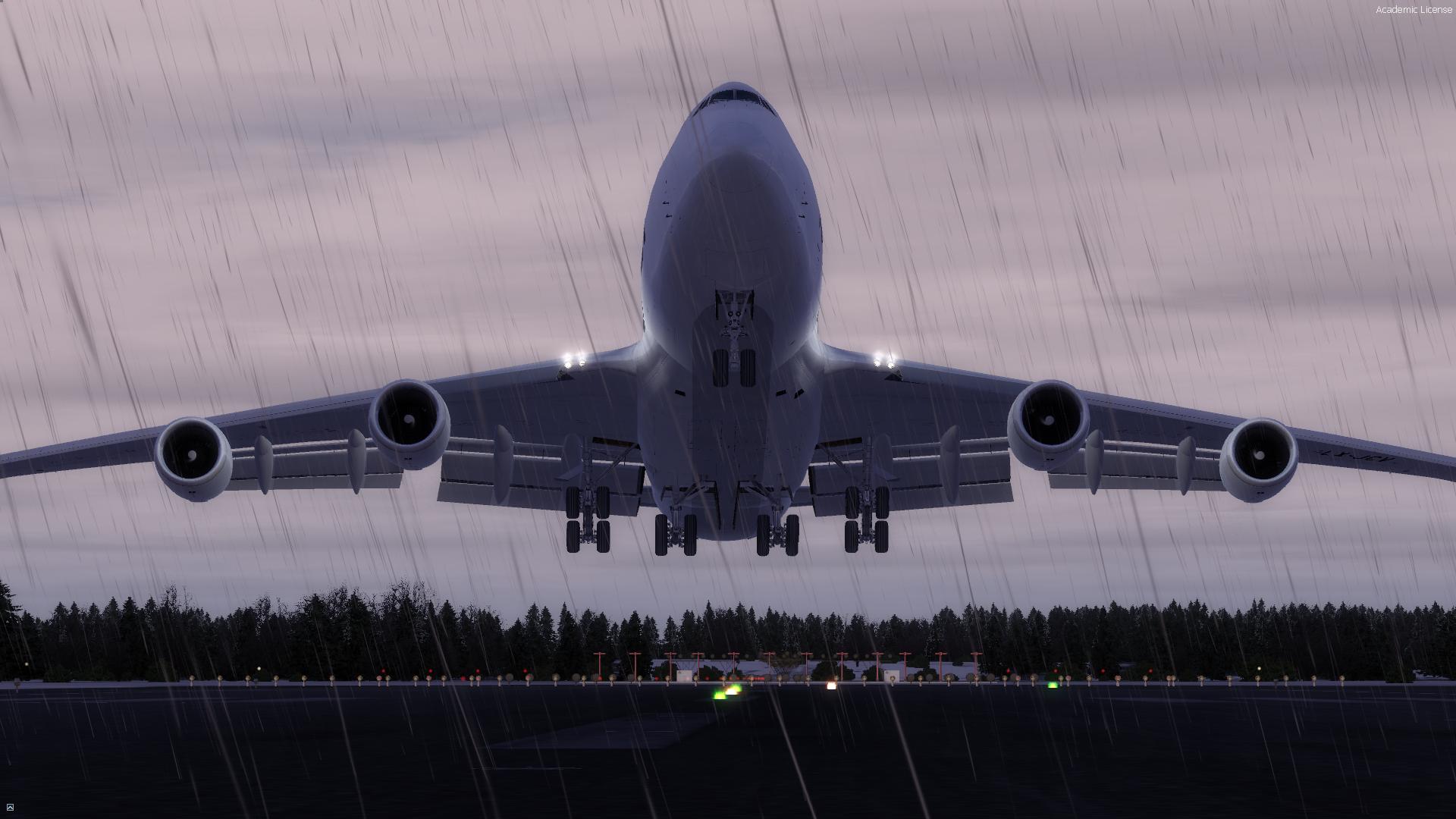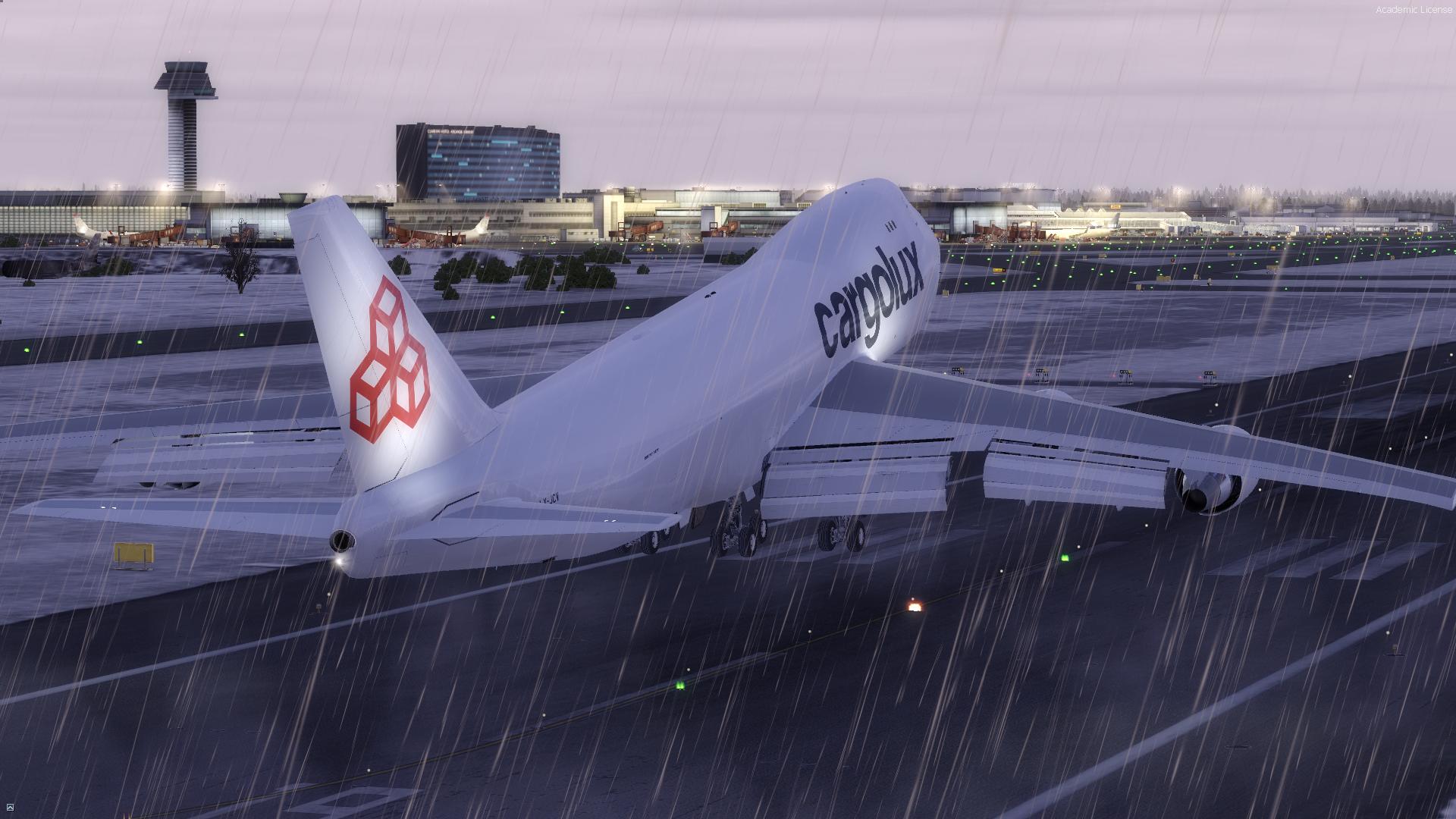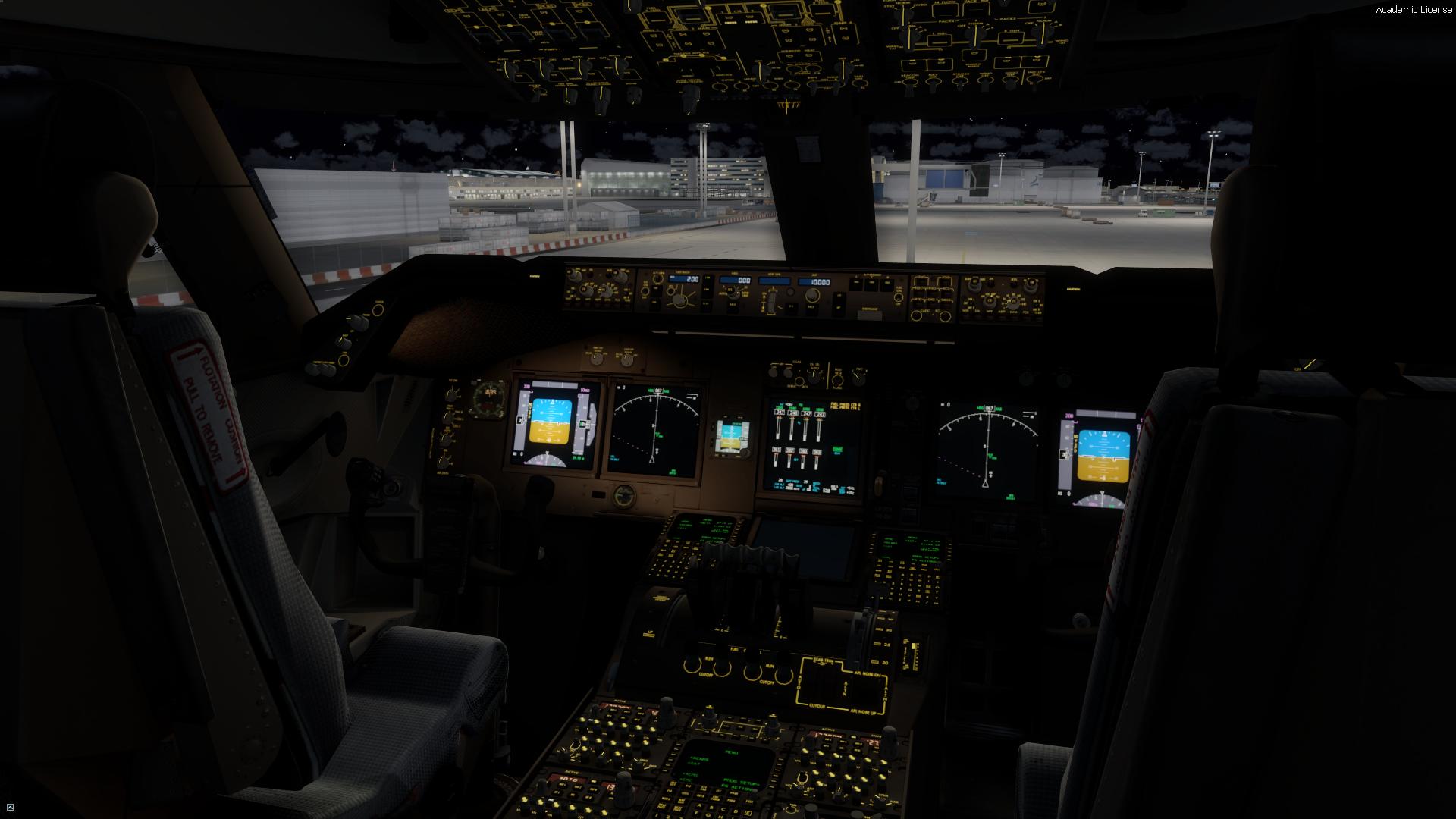Introduction
There are few aircraft in the world that truly deserve the title of icon. There are the interesting, the unique, even the special. but only a handful of aircraft ever reach icon. The Boeing 747 is such an aircraft. It's certainly interesting, defiantly unique, and absolutely special. Its story is well known. From the original plan to create a cargo aircraft for the Air Force to the construction of its own factory as they built the first models, the 747 has plenty of stories to share about itself. Now in the twilight of her career, the 747 continues to fly today, 50 years since it first left Everett. As you may have gathered, I'm a huge fan. My first flight was onboard a classic 747. Aged 8, I stood in the cockpit of the mighty beast and saw the Atlantic at 30000+ feet. It was love at first sight. When PMDG announced they were remaking their classic 747 Queen of the Skies (QOTS), well a little shout of glee came out! I still have the FSX version I got as a birthday gift in 2008. To say the old girl looked tired by today's standards would be an understatement. Despite its looks, under the hood the 747 QOTS was pretty advanced, with many of the complex systems in place to challenge any would be pilot. I learnt a lot from that add on, mostly that my system was too poor to get a decent frame rate.
The arrival of the new QOTS II for P3D v4 made my heart beat a tad faster. I was once told I couldn't improve on Mozart, can PMDG improve on their original?
Second Coming but the Third Version
With any new version of anything, numbering can be confusing. For example, I'm typing this on my iPad Air 2, or an iPad 6, which is not an iPad Pro, which of course is now new and improved so the new iPad Pro isn't the original iPad Pro, more like an iPad Pro 2, wait what was my point? Ah yes, naming confusion. The release of the 747 QOTS II is actually the PMDG 747-400 v3. It's even called that by the boss himself. Confused? In truth both titles are correct. This is indeed the third version of the iconic Boeing, the first being released for FS2004. It's also the second version of the QOTS edition, first published for FSX. For the sake of this review, let's stick with the acronym QOTS II, or maybe just 'the new one'.
This new version offers a substantial update for the original FSX edition. Versions for Prepar3D v3 and v4 join the new FSX, with the Prepar3D v4 version being 64bit.
Once downloaded the aircraft installs with ease. Along with the aircraft itself, PMDG installs their very own 'Operation Centre'. This is a one stop shop in keeping all your PMDG Aircraft up to date, as well as allowing you to look through, download and install new liveries for your 747. Introduced with the 777 a few years ago, the ops centre is a pretty cool feature. Alongside the main installer, you also get a comprehensive set of manuals for the 747, including a nice introduction manual, a great tutorial and full versions of the FCOM and QRH manuals. There's plenty to get your teeth into there.
Model Features
Here is a list of the model features as described by PMDG:
Complete from the start - All variants of the 747-400 are included;Complex exterior modelling;
Virtual cockpit with dozens of layout option;
PMDG Service fleet;
PMDG Operations Centre;
Fully featured FMC;
Engine and flight modelling is within 5% of the actual Boeing aircraft performance charts;
Ultra smooth autopilot flight director system (AFDS);
Simulation of the Collins WXR-2100 weather radar;
Meticulously created multiple soundsets;
Cockpit Shake Modeling;
Fully functional Runway Awareness and Advisory System (RAAS);
3D volumetric exterior lighting; and
Extensive documentation.
More Than Just a Single Type
With the aircraft installed it was time to get my favourite airlines in sim. As standard, all aircraft come with the PMDG colours as a livery. If you think PMDG is going to skimp on just a single variant, think again. In total, there are seven unique variants to the 747-400 family, and three engine types as well.
Alongside the standard -400 model are the -400BCF or Boeing Converted Freighter, the -400D, a specific version developed mainly for the Japanese domestic market, the -400ER or Extended Range, and the -400ERF or Extended Range Freighter. The -400F and finally the -400M or combi, which has both a passenger cabin and a large freight hold. Each version has their own unique differences, from number of fuel tanks to lack of winglets, and each version has different performance. Each version also has its own unique model, so if you're flying the Rolls Royce engined aircraft, it won't feature the General Electric engine on the wings. Already you're getting the feeling that there's a forensic level of detail going on here.
Into the Sim
Loading the aircraft is much easier than in the original FSX version. No longer do you need to load a default flight with the C172, then load the aircraft. PMDG have been back to the original code and rewritten it for the new age. Just pick your gate and choose you're aircraft and voila, all is good.
Once I'm in, my first impressions are akin to 'oh my!'. Compared to the old QOTS, the new version is crisp and clear. Externally the aircraft has been remade and compared to its predecessor, things are looking good. The main textures are all very nice, but on closer inspection, things are not as sharp as perhaps they should be. Warning labels are often just token blocks of colour. Even the engine labelling of Rolls Royce is low resolution. Perhaps this isn't a particularly big issue, but the arrival other recent product releases have raised the bar significantly in this regard, with almost all external labelling being high resolution and readable.
Despite the makeover, the main gear modelling could look a little better. Again, PMDG's competitors have upped the game here and in places the 747 looks a bit 'scruffy.' These are very tiny issues though, and overall the external modelling is very good.
Inside the Belly of the Whale
Once you're comfortably inside the cockpit, things get a bit serious. Given this is where you'll spend much of your time, the modelling should be top notc, and so it is. The main areas of interest being the pedestal, overhead, and MIP are as you'd expect, very well textured. There's dust, grime and fingerprints galore here. It's all very much in keeping with an aircraft that debuted in the late 80's, and was possibly last cleaned sometime around the year 2000. Aircraft are never pristine and the fact this one isn't, is very true to life. Away from the action, the rear of the cockpit is beautifully rendered, with all the labelling crisp and clear. The whole thing is very high definition, though I'm not sure I'd want to see that carpet look any sharper. All in all, a tour de force in modelling and texturing.
Also included with the 747 are various passenger cabin views. The views out over the wings are nice, and in flight you can enjoy the very nice wing flex the 747 is known for. If you turn your point of view inward though, you get a very basic cabin to look around. It's decidedly low rent and that's fine. Modelling the whole cabin in exquisite detail will blow through the 32bit virtual memory barrier and adds nothing to the sim itself. So, take it for what it is and move on.
Feature Rich
Starting with the original 737 NGX, PMDG have created a core code base that can be built on and refined. The 737 introduced service based failures, the 777 gave us accelerated time and turn around countdowns. Both of these features are present in the 747 v3. In addition, the 747 features the latest improvement, a fully functional ground crew. Now you can call your very own catering trucks, water bowser, fuel truck, and more. It's an excellent feature very much reminiscent of Aerosoft's old AES for FSX. The crew can be called manually, or if your running with the full ground turnaround options, then the ballet of trucks and bags come and go while you prepare for departure. It's a tiny bit of immersion that makes a huge difference.
Whilst the inclusion of the ground vehicles could be said to be a bit frivolous, there are other features available that make the 747 that bit more hard core.
All in the Code
Diving into the 747, it's interesting to see the frankly anal level of detail that PMDG will delve into. Take the FMC for example, in real life, the FMC has all the computing power of a 1970's PC. It often struggles to make complex calculations quickly. All this has been modelled in the sim, and the basic 8086 processor that runs the FMC chugs along slowly but accurately. That's real attention to detail, and it doesn't stop there. The ground handling has been moved 'outside the sim', bypassing the old system to produce a superbly accurate takeoff and landing roll.
While some of the cool coding remains hidden behind the surface, one of the coolest new functions is incredibly visible. As mentioned earlier, the 747 wings flex during flight. However, it's not just the movement of air that bends the wing. The 747 is above all, a large aircraft with a large thirst. A full set of tanks can keep the old girl in the air for almost 8000nm. All that fuel has to go somewhere though. The wings carry the bulk for most flights. Top the tanks off and the wings noticeably sag when sat on the ground. Decrease the load and the tips come up. Its a visual treat and shows you the depth of detail PMDG have gone into.
In-flight Performance
With everything sorted behind the scenes, it's the inflight performance that counts. This is a heavy aircraft in more ways than one. You will need to adjust your settings to get this running nicely. That said, FPS is surprisingly good. In standard 1920 x 1080 resolution, performance remains in the high 30's, even in poor weather. I do need to turn down my AI though to keep the figures up. Switching to three screens and it's a different matter. Around EGLL, even on a clear day, FPS struggles to hit 20. Add in traffic and a bit of bad weather and mid teens is more apt.
However, with good FPS, the aircraft is a joy to fly. Starting at the gate I run though the checklists and get the aircraft set up. If you don't fancy running a cold and dark setup every flight, you can always load up a specific panel state that range from power on to ready for taxi. As the aircraft starts up its worth mentioning the sound environment. Fans whir, switches and relays click and trip. It's all very immersive. The whole sound set is incredibly good, with recordings taken from the cockpit, then mastered for surround sound. Great stuff.
Pushback can be sorted from the FMC, though it's still limited to you having to guess how far back you want to go if you want to be on the taxi line when you're finished. Taxiing, the sound of the engines fill the speakers and sounds from around the cockpit once again add to the ambiance. Coupled to this, PMDG have modified the cockpit head movement, so your view 'bobs around' as you taxi anytime you hit a taxi light or bump. The Same effect can be seen on takeoff and landing.
Takeoff really gets the blood pumping as the sheer mass of the aircraft is evident. Fully loaded, you can use almost all of the runway. Lifting the nose and the leviathan lifts into the air. Once you're up though, the aircraft is really quite maneuverable. It's a real pussycat to hand fly and I was more than happy to hand fly her all the way to the cruise. At this point I have to mention the MCP or Autopilot Panel. It's often the small things which can make the difference, and the simple act of dialing in an altitude or speed is a joy. Watch as the numbers flick over mechanically. This simple animation shows a fantastic level of detail.
On long haul, it's almost inevitable that you'll fly into darkness. At night the cockpit is a joy, with the same zonal lighting introduced with the NGX. The introduction of dynamic lighting for P3D v4 can enhance the external lighting, but often at the expense of performance.
Finally, when it comes to landing, the 747 can be a handful. You'll need to watch your speeds and unlike the Boeing 777 and more modern aircraft, the 747 doesn't reduce the speeds automatically on the approach. You'll need to dial those in carefully. Slowing all that momentum isn't simple and you really need to be ahead of the aircraft on the descent. For landing though, with full flaps and a plus 5kt on my Vref speed, the Jumbo handles like a dream. So long as you remember your five stories up, landing is a dream. I made some fantastic landings in the old girl. Best advice for a good landing is to listen to the radar altimeter call outs and you'll be fine.
Summing Up
Summing up, the PMDG 747 Queen of the Skies II is much like interviewing your favourite celebrity. You're kind of a bit in awe, but at the same time, you've got to be fair. I'm a massive fan of the 747, she was my first love and even today, greet each one I see by saying 'hello gorgeous'. So it would be fair to say I have high hopes for this aircraft and I'm not disappointed. The 747 stands on the shoulders of the NGX and T777. From the service failures, the accelerated time features, and now the integrated ground service vehicles, along with a host of other features combine to make a really special aircraft. It's a complex aircraft, and you can spend hours and hours digging into the FMC systems. Couple that with integrations from HiFi's Active Sky weather radar and support for PFPX and you'll discover an aircraft simulation that's as well rounded a product as you'll ever come across.
That said, it's not without issues. The modelling and texturing is a little sub-par compared to other new products. It may sound harsh but given the price of $140 at the time of writing, the whole package has to be exceptional. Performance is also an issue. All that complexity comes at a price and compromises need to be made to ensure a good experience. Flying at large airports like Heathrow or Frankfurt online or with AI traffic and the sim can become a slideshow.
The downsides however are small compared to the whole. The 747 is now approaching the twilight of her career, though the last flying days are decades away. In a story that's already spanned nearly 50 years, the 747 is still the Queen of the Skies. The PMDG 747 QOTS II is a fantastic tribute the old girl, capturing the magic of the 747 for simmers to enjoy time and again. This is the kind of aircraft you'll never fully master, instead it'll be a good friend and a great companion along the virtual airways.
Documentation
From the PMDG Operation Center, well over 1,000 pages information can be viewed and include:
Flight Crew Operating Manual (FCOM)
Quick Reference Handbook (QRH)
168 page introduction manual specific to the simulation; and
113 page tutorial flight to learn from as you fly.
Technical Requirements
This version of the 747-400 Queen of the Skies II is for Lockheed Martin's Prepar3D v3 and v4 only. Other specified technical requirements are as follows:
Simulator: P3D v3 and v4 NOT COMPATIBLE WITH PREPAR3D 2.x;
Hardware: Dual Core, 2.5 GHz or faster, 4 GB of RAM, A video card with at least 1 GB of VRAM; and
Windows: Windows 7 64-bit (older OSs such as Windows XP may work, but PMDG cannot guarantee compatibility or support).
Review Computer Specifications
The specifications of the computer on which the review was conducted are as follows:
Intel i7 7770K @ 4.5 GHz2 x Nvidia 980Ti GTX 6GB GPUs;
16 GB DDR4 memory @ 3200MHz;
Windows 10, (64bit); and
Lockheed Martin Prepar3D v4.
Additional Major Add-ons. Active Sky for P3Dv4, Active Sky Cloud Art, FS Global Ultimate region series, Orbx FTX Global BASE, Orbx FTX Global VECTOR, Orbx FTX Global openLC series, Orbx FTX Trees HD, Orbx FTX region series, and Orbx FTX airport series.
Verdict and Scores
Verdict
| As you would expect, the PMDG 747-400 Queen of the Skies II is an extremely detailed and beautifully rendered aircraft. Some areas are lacklustre and the price is for purists. |
Scores
For |
Against |
Category |
Score/10 |
|---|---|---|---|
| Great rendition | Some areas of the external model a little lacklustre | External Model | 9.0 |
| Fantastic to hand fly | Price | Internal Model | 9.5 |
| Great sounds and lighting | Sounds | 9.0 | |
| Full selection of variants and liveries | Flight Characteristics (does it fly by the numbers) | 10 | |
| Flight Dynamics (does it feel like what it looks like) | 10 | ||
| Documentation | 10 | ||
| Value for Money | 8.0 |
Overall Score

PMDG's 747-400 Queen of the Skies II is awarded an overall Mutley's Hangar score of 9.4/10, |


